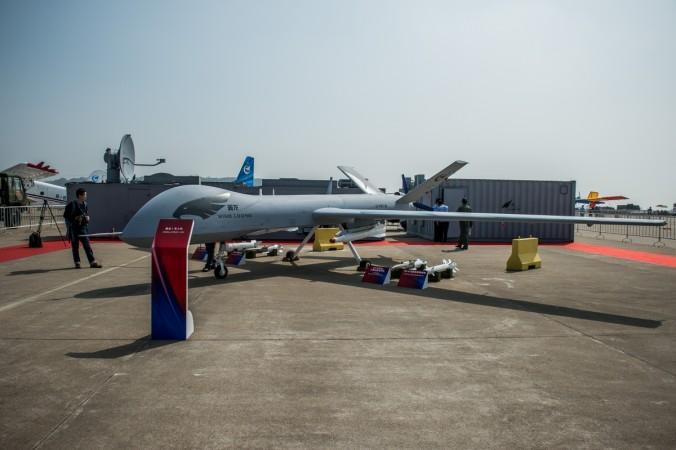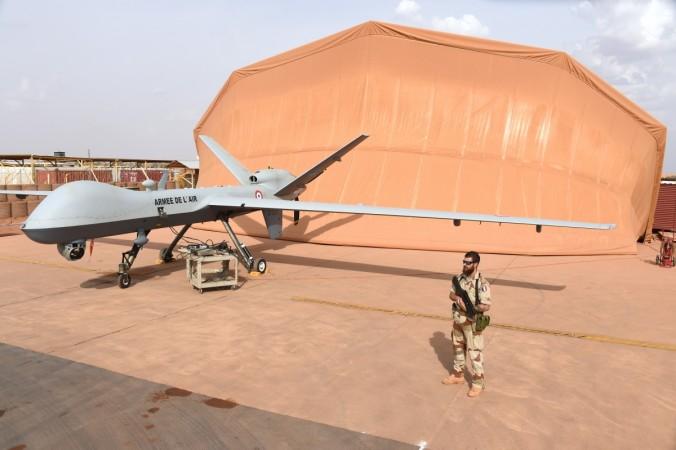China has started producing its deadliest drone ever for global buyers, and has claimed that it could match the performance of an American classic, deemed by the West as the best of its kind, at a much lower cost.
Dubbed CH-5, the done is the latest in the CH (Caihong or Rainbow) series of unmanned aerial vehicles created by the China Aerospace Science and Technology Corporation. Unveiled at Airshow China in November 2016, the new CH-5 can conduct both combat and reconnaissance missions while carrying up to 16 air-to-ground missiles.
The first mass-production model of the CH-5 conducted its maiden flight from an airfield in China's northern Hebei Province on July 14. During the test flight, the drone was airborne for more than 20 minutes.

CH-5 can leave Reaper 'in the dust'
The CH-5 is capable of staying up in the air for a maximum of 60 hours, almost three times that of its Chinese counterparts. The combat-ready done can also be modified to help it fly for up to 120 hours, giving it a range of over 10,000 kilometres.
According to Shi Wen, the chief designer of the CH series, the capabilities of the CH-5 can leave the U.S.-made General Atomics MQ-9 Reaper "in the dust."
"The UAV is as good as the US-made General Atomics MQ-9 Reaper: a hunter-killer drone often deemed by Western analysts as the best of its kind," local media quoted Wen as saying.
First developed in August 2015, the CH-5 has a wingspan of 21 metres, which is almost twice as big as its predecessors in the CH family. The drone has a payload capacity of 1,000 kilograms, enabling it to carry as many as 24 missiles on a single mission, enough to destroy a convoy of armoured vehicles, according to China Daily.
"The CH Family has the characters of optimized shape, long-time endurance, adaptive payload, simple maintenance and well cost-effectiveness. It could be used to war-field reconnaissance, firing correction, data relay, intelligence collection and electronic warfare," the China Aerospace Science and Technology Corporation said on its website.
In addition, the CH-5 is capable of detecting underwater targets such as submarines while it can also use high-resolution cameras, radar and radio transmitters that can be useful for civilian purposes.
How good is the Reaper?
The MQ-9 Reaper, also called the Predator B, can be up in the air over 27 hours, and has a 1,746-kilogram payload capacity, including 1,361 kilograms of external stores. With a 20 metre wingspan, the Reaper can be armed with a variety of weaponry, including Hellfire missiles and laser-guided bomb units.

With a maximum speed of 240 knots (444 kilometres per hour), the Reaper is twice as fast as the MQ-1 Predator, and can carry payloads to an altitude of 50,000 feet (15,000 metres).
While the CH-5 can give the Reaper a run for its money in almost every aspect, it's the ability to operate at a much higher altitude that gives the American drone a significant competitive edge over its Chinese counterpart. Unlike the Reaper, the CH-5 can climb to a height of only about 9,000 metres, making it more vulnerable to some anti-aircraft systems.
But CH-5 is cheaper and easier to use
The CH-5's performance can match that of the Reaper at around half the cost of the later. According to Wang Song, an associate professor with Beihang University's school of aeronautic science and engineering, the Reaper cost about $17 million as per a 2013 US budget report while "the CH-5 may come in at less than half of the price."

The CH-5 comes with a simple user interface while its take-off and landing can be automated. Because of these advantages, the drone can be operated by undergraduate student with basic knowledge of aviation, according to Chinese state media.
The previous models in the CH series have been sold to centuries like Egypt, Iraq, Nigeria and Saudi Arabia while several countries have reportedly expressed interest in the new CH-5 drone as well. However, the names of the potential buyers have not yet revealed by the CH-5 developers.














